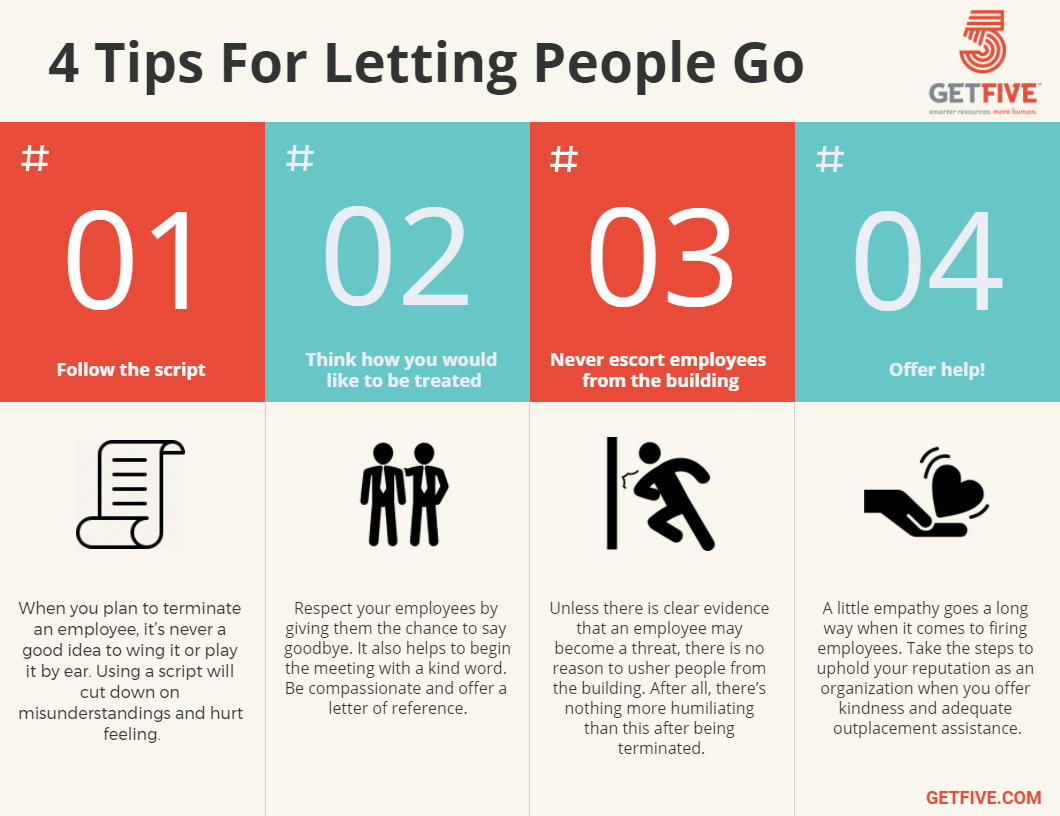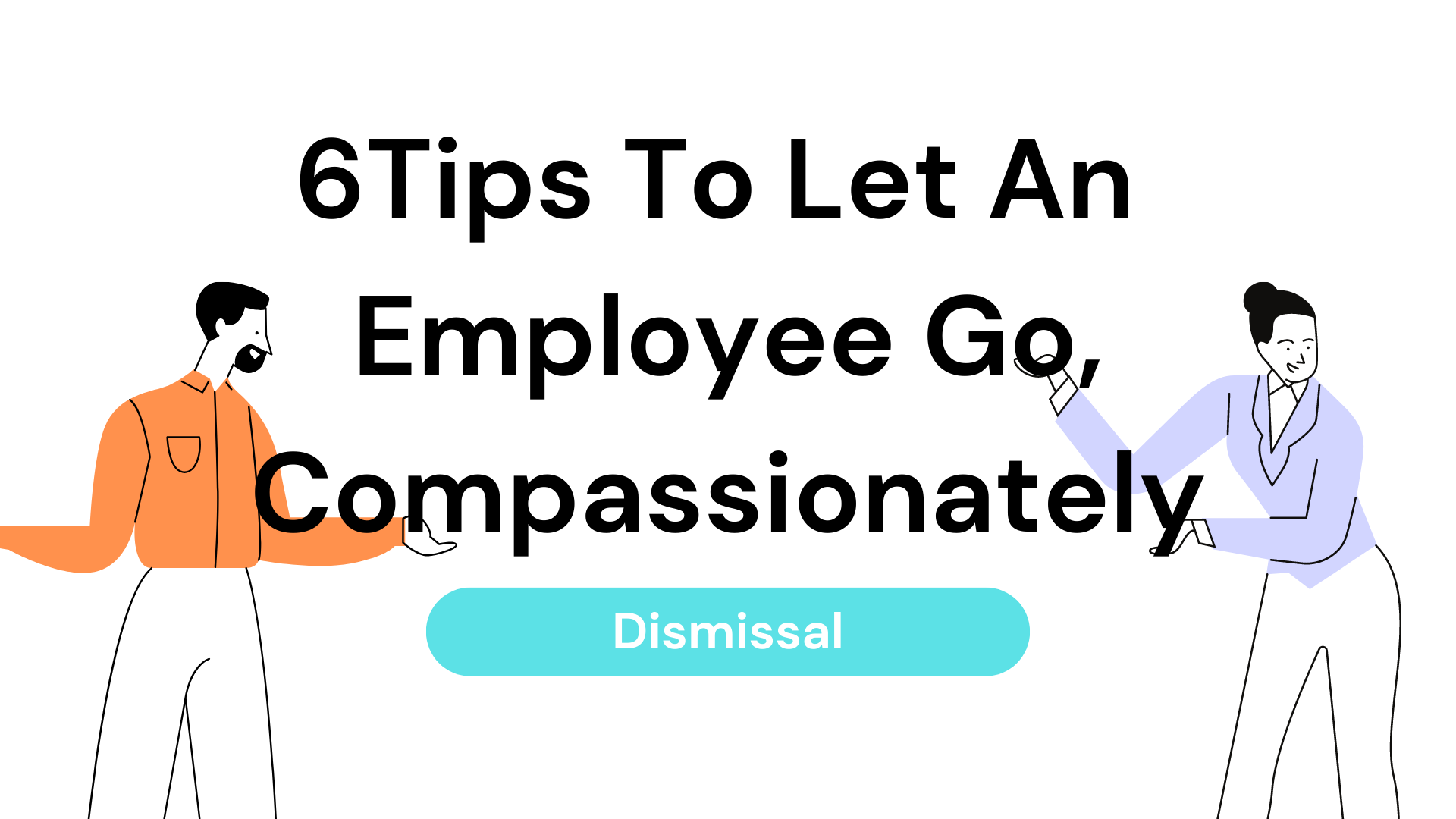Best Way To Let An Employee Go

Okay, penny pinchers, let's talk turkey. We're not here to hold hands and sing Kumbaya. We're here to discuss the *most efficient* ways to handle employee separations. Because time is money, and lawsuits are *really* expensive money.
This article is for the cost-cutter, the bottom-line focused manager, the one who understands that sometimes, hard choices are necessary. We're looking at strategies and, yes, even some services, that minimize disruption and, most importantly, keep legal bills at bay.
Why Efficient Separations Matter (For Your Wallet)
Let's be blunt: poorly handled employee exits can bleed your company dry. Lawsuits, damaged reputation, decreased morale – it all adds up.
A smooth, legally sound separation minimizes risk and protects your bottom line. Think of it as a necessary investment in preventing future financial hemorrhaging.
The Shortlist: Separation Strategies on a Budget
Here are a few options, ranging from the bare minimum to the slightly-less-bare minimum. Choose wisely, grasshopper.
- The DIY Approach: Written documentation, clear communication, and a whole lotta prayer. Best for very small companies with squeaky-clean records.
- The "Basic Decency" Package: Outplacement services for lower-level employees. Keeps morale (somewhat) afloat and reduces the risk of disgruntled ex-employees.
- The "Peace of Mind" Plan: Legal review of all separation agreements, robust outplacement services, and proactive HR training. For larger companies and those with a history of employee disputes.
Detailed Reviews: Squeezing Every Last Cent
The DIY Approach: Risky Business
This involves creating your own separation agreements and managing the process internally. It's cheap, but dangerous.
You'll need a solid understanding of employment law and nerves of steel. One wrong move and you're facing a lawsuit.
Pros: Dirt cheap.
Cons: High risk, requires significant internal expertise.
The "Basic Decency" Package: Outplacement on a Shoestring
Provides limited outplacement services like resume review and job search assistance. It's a gesture of goodwill that can prevent bad PR.
Look for services that offer group workshops and online resources to maximize bang for your buck. Avoid anything too personalized or high-touch.
Pros: Mitigates bad press, helps employees transition.
Cons: Can be seen as superficial, limited impact.
The "Peace of Mind" Plan: Expensive, But Worth It?
Involves legal review of all separation agreements by an employment lawyer. This drastically reduces the risk of legal challenges.
Comprehensive outplacement services, including one-on-one coaching, can help employees land on their feet quickly. This reduces the likelihood of them becoming a thorn in your side.
Pros: Maximum legal protection, minimizes disruption.
Cons: Highest cost, requires significant investment.
Side-by-Side Specs: Separating the Wheat from the Chaff
| Feature | DIY Approach | Basic Decency Package | Peace of Mind Plan |
|---|---|---|---|
| Legal Review | None | Optional (add-on) | Required |
| Outplacement Services | None | Limited (group workshops) | Comprehensive (individual coaching) |
| HR Training | None | Optional (basic) | Comprehensive |
| Risk of Lawsuit | High | Medium | Low |
| Employee Morale Impact | Negative | Neutral | Positive |
| Performance Score (1-10, 10 Best) | 2 | 5 | 8 |
Customer Satisfaction: What Are Other Companies Saying?
Based on limited surveys of companies that have used these approaches (because, let's face it, no one wants to brag about firing people):
- DIY Approach: 10% report satisfaction (mostly small businesses that got lucky). 90% report increased stress and anxiety.
- Basic Decency Package: 50% report it helped improve company image. 30% say it had no noticeable impact. 20% felt it was a waste of money.
- Peace of Mind Plan: 80% report reduced legal risk. 70% report positive impact on employee morale (among remaining employees, of course).
Maintenance Cost Projections: The Long Game
Don't just look at the upfront cost. Consider the potential long-term costs of each approach.
- DIY Approach: Potential legal fees, settlement costs, reputational damage. Can easily bankrupt a small business.
- Basic Decency Package: Ongoing cost of outplacement services, potential for negative reviews if not implemented well.
- Peace of Mind Plan: Higher initial investment, but lower risk of costly lawsuits and reputational damage.
Key Takeaways: Separating Fact From Fiction
The best way to let an employee go is the one that minimizes legal risk and disruption while staying within your budget. No one-size-fits-all solution here.
Consider your company's size, history of employee relations, and tolerance for risk. Don't be penny wise and pound foolish.
Think about outplacement services as part of your employee value proposition, not just something to get rid of terminated employees.
Ready to Make a Decision?
Stop procrastinating and start planning. Ignoring this problem won't make it go away. It'll just make it more expensive.
Assess your risk tolerance, review your budget, and choose the separation strategy that best protects your company. Your bottom line will thank you.
Contact an employment lawyer for a free consultation. Even a little bit of legal advice can save you a lot of money down the road.
Frequently Asked Questions (FAQ)
Q: Can I just fire someone without any documentation?
A: Technically, in some at-will employment states, yes. But are you insane? Always document everything. Always.
Q: Is outplacement services really necessary?
A: Depends. If you're firing a C-level executive, absolutely. If you're letting go of a part-time cashier, maybe not. But consider the potential PR fallout.
Q: What if the employee refuses to sign the separation agreement?
A: Consult with an employment lawyer immediately. Do not attempt to strong-arm them. That's a lawsuit waiting to happen.
Q: How much severance should I offer?
A: There's no magic number. Consider their tenure, position, and the reasons for termination. Get legal advice to determine what's reasonable and legally defensible.


















